Butterfly bird wings
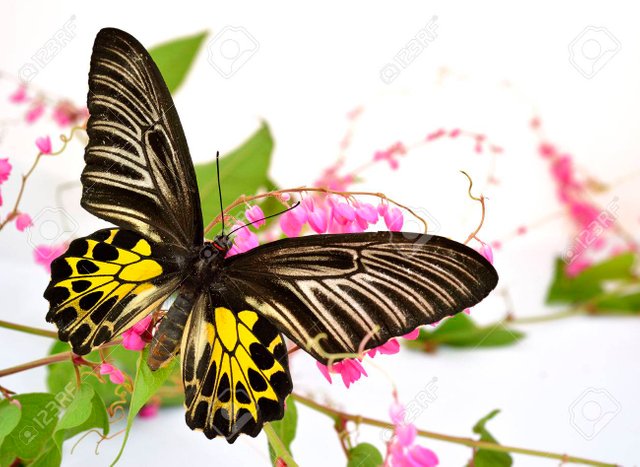
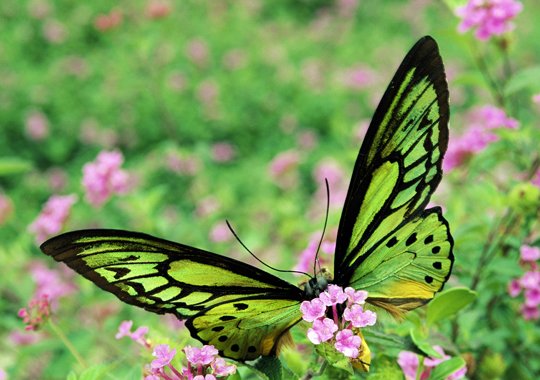
Sizes:
Spread: from 19 to 28 cm.
Biology:
A monophonic species, the butterfly bird wings feeds only on the climbing plant Aristolochia schlechteri. This climbing plant also plays a central role in the reproduction of the butterfly since it puts a single egg on the bottom of one of the leaves. After about 11 to 13 days, the caterpillar hatches and eats almost constantly, rapidly increasing in size. The plant contains a toxic substance that, without being toxic to caterpillars, makes the caterpillar unpleasant to potential predators. This toxic trait is announced by the remarkable bright coloration, but if consumed by a naive predator, the toxin can cause severe vomiting. The rapid growth of the caterpillar is accompanied by six changes in which new skin grows and the first is thrown before forming a chrysalis in which the metamorphosis takes place over a period of about 40 to 45 days. Once it leaves, the adult butterfly is still dependent on the same plant, feeding on its flowers with an elongated proboscis.
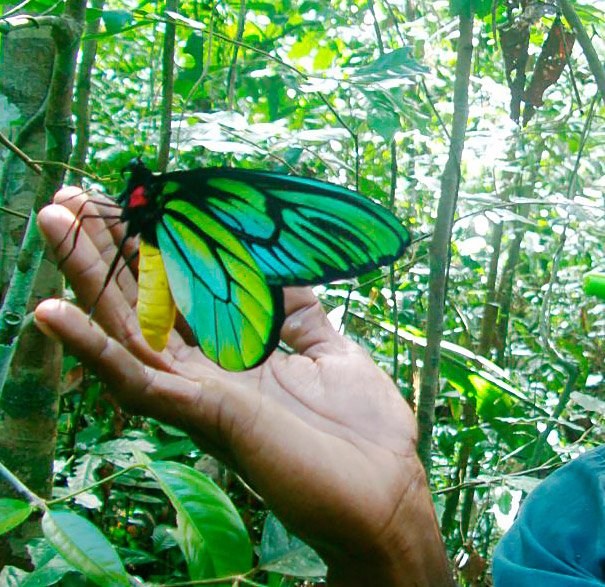
Rank:
Endemic to northern Papua, New Guinea, east of the Owen Stanley Range, the butterfly bird wings has a very small range.
Habitat:
This species of insect is found in the lowland rainforests of Papua New Guinea at altitudes of 900 meters above sea level.

State:
It is classified as Endangered (EN) on the IUCN Red List and is listed in Appendix I of CITES.
Threats Being one of the most beautiful butterflies in the world, the butterfly bird wings, is extremely attractive to collectors. The high value of this rare species has caused the butterfly to be captured in large quantities. Because of the dramatic decline it suffered in 1966, the Government of Papua, New Guinea gave legal protection to the bird-winged butterfly. Therefore, the trade in this butterfly has been somewhat reduced, but the illegal capture continues to threaten the species. At present, the biggest threat it faces is the loss of its habitat in rain forests. Historically, forests were cleared for subsistence agriculture and logging and large areas were destroyed by the volcanic eruption of Mount Lamington in 1951. Currently, the main cause of forest loss is due to the expansion of the forest industry. palm oil, aggravated by the development of rubber and cocoa plantations.
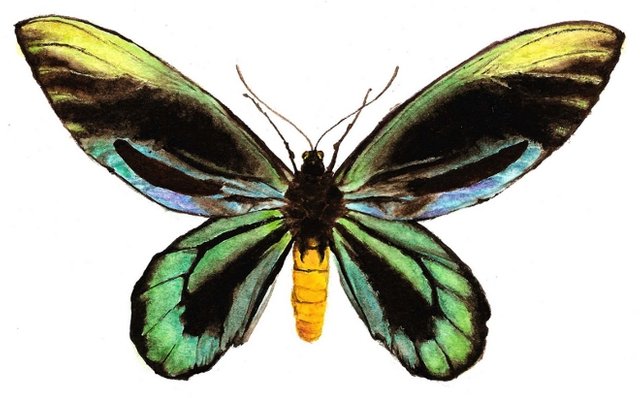
Conservation:
Threatened by illegal trade and habitat loss, the survival of the birdwing wings depends on the successful implementation of conservation measures. To reduce commercial pressure, the species was included in Appendix I of the Convention on International Trade in Endangered Species (CITES) and in Annex A of the EU Regulation on Trade in Endangered Species, which prohibits international trade. . On the other hand, the new Government of Papua New Guinea has provided financial support to local communities to develop butterfly farms. These licensed farms aim to support the trade in wild butterflies while providing local communities with additional income and improving the long-term survival prospects of many rare butterfly species. In addition, a large wildlife management area has been created to protect the habitat of this species. Assuming these measures continue successfully, there is hope that the birdwing wings will continue to beautify the forests of Papua, New Guinea.
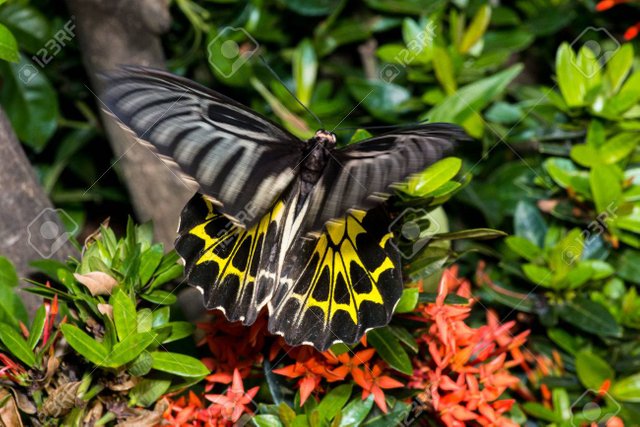
But its habitat is disappearing. Millions of years of evolution to survive in the middle that will be ruined by the aggression of the human being in the jungle. At present, only one important population remains on a remote plateau called Managalas.
The oil palm, coffee and cocoa crops increase and the butterfly's habitat decreases. The future of this butterfly is in danger. It still survives in small reserves surrounded by palm oil.

In addition, its wings are much appreciated by collectors. They have come to offer more than $ 8,500 for a pair of wings in good condition. The illegal trade with this butterfly has a value of 200 million dollars a year.
Therefore, a new and unorthodox method of protection is going to be tried: to change the official conservation status of the birdwing wings to appendix 2 in the List of Protected Species, which allows a limited and controlled trade. In this way, we want to encourage poor subsistence farmers to protect the butterfly's habitat and sell an agreed quota of the samples they collect. And, in addition, there is a blow to illegal trade.
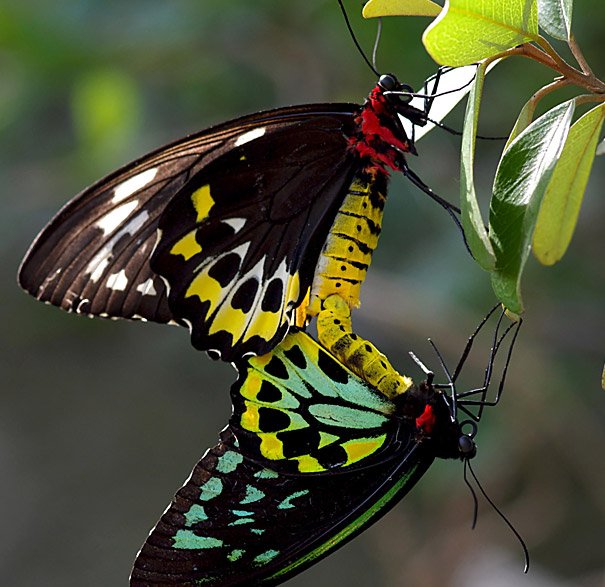
Taxonomy
Kingdom:
Animalia
Edge:
Arthropoda
Class:
Insecta
Order:
Lepidoptera
Family:
Papilionidae
Subfamily:
Papilioninae
Tribe:
Troidini
Gender:
Ornithoptera
Subgenre:
Ornithoptera (Straatmana)
Derslisle, 2007
Species:
O. alexandrae
Rothschild
Related sources
en.butterflycorner.net/Ornithoptera-priamus.952.0.html
en.m.wikipedia.org/wiki/Ornithoptera_priamus
www.inaturalist.org/taxa/82287-Ornithoptera-priamus
Nice article you have describe everything about the butterfly and you have made a good post I ever seen thank you so much for your good job
Congratulations @thaealmarza! You received a personal award!
Click here to view your Board
Congratulations @thaealmarza! You received a personal award!
You can view your badges on your Steem Board and compare to others on the Steem Ranking
Vote for @Steemitboard as a witness to get one more award and increased upvotes!